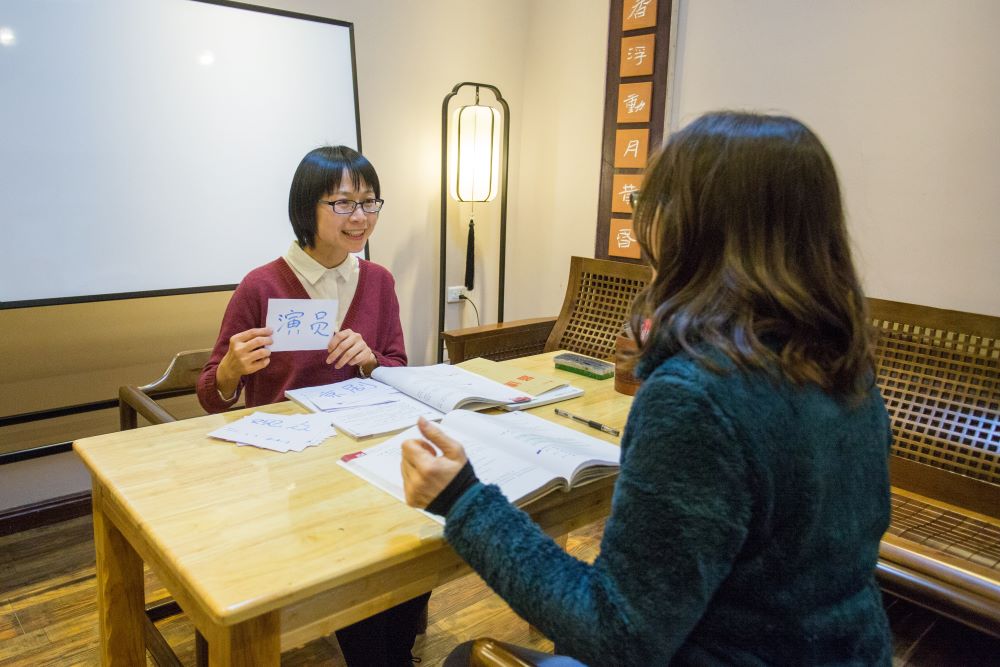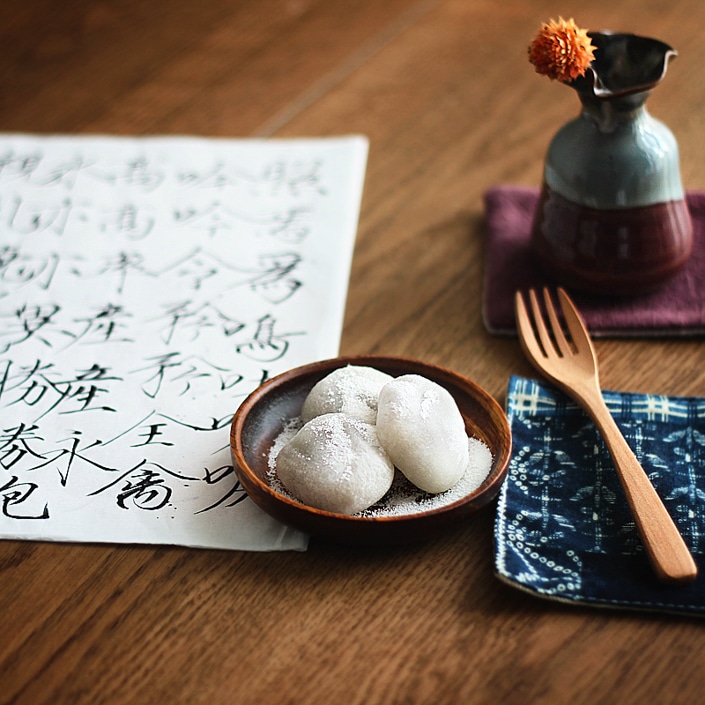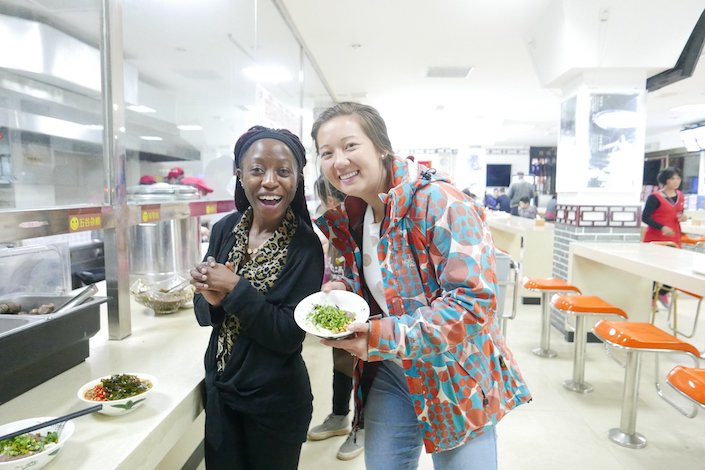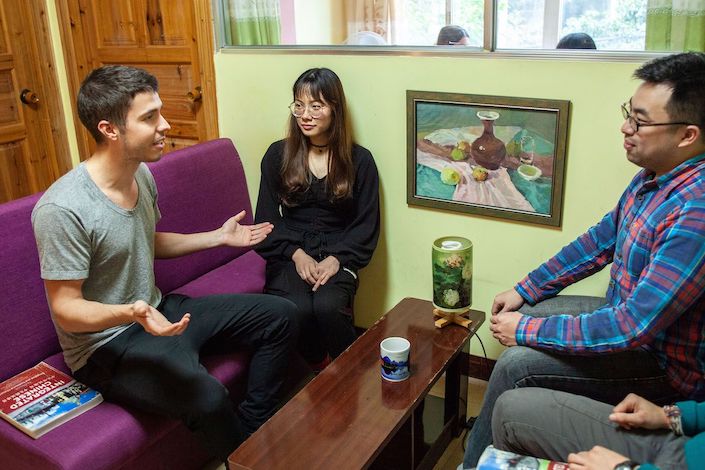The Chinese Family Tree, Explained
Learn Chinese in China or on Zoom and gain fluency in Chinese!
Join CLI and learn Chinese with your personal team of Mandarin teachers online or in person at the CLI Center in Guilin, China.
China is one of the most family-centric societies on earth. This belief in the importance of family is clearly reflected in the Chinese language, which contains diverse terms of address for family members depending on their age, gender, and other factors. Check out this article to learn vocabulary, grammar, and cultural insights related to the Chinese family tree.
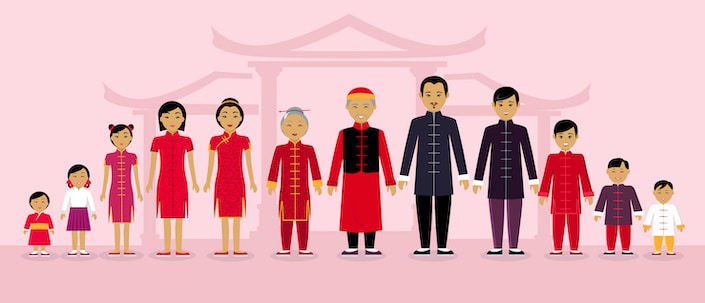
Table of Contents
Examining family in Chinese culture
Nuanced and impactful, family conventions have both endured and shifted over the course of Chinese history. In order to understand the notoriously complex set of Chinese vocabulary and grammar rules related to the Chinese family tree, called 家谱 (jiāpǔ) in Mandarin, it's important to first grasp the role of the family within Chinese culture and society.
Confucianism, China’s ancient belief system
Most students attempting to understand traditional Chinese culture will first look towards Confucianism, the school of thought founded by China’s most influential philosopher and educator, 孔子 (Kǒngzǐ; Confucius), who lived during the 6th-5th centuries BCE.
Propagated by his disciples over the following centuries, Confucian ideology was based on a set of virtues and morals (伦理 lúnlǐ). According to Confucian beliefs, family is the basis of all social organization.
Confucius held that a clear power hierarchy and distribution of roles within the family unit would lead to family harmony, which would, in turn, create stability and peace within communities and nations.
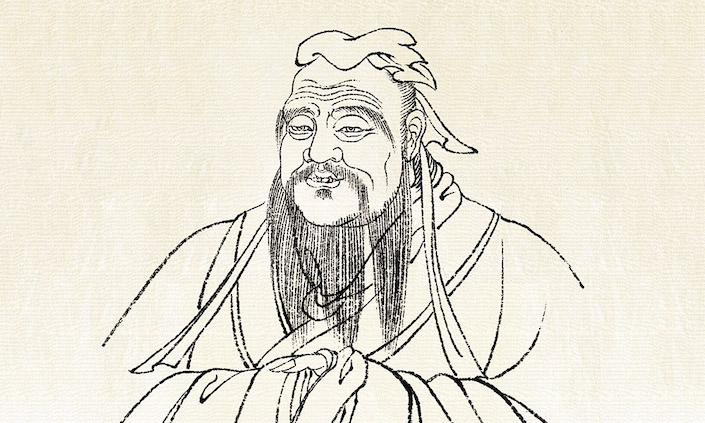
Confucius emphasized the importance of family as the foundation of a harmonious society.
Familial obedience and the importance of hierarchies
In ancient China, it was especially common for large, extended family households composed of multiple generations to live together under one roof. Hierarchical structures within families were centered around the concept of 孝顺 (xiàoshun). This concept, often translated as “filial piety,” is a pillar of the traditional Chinese moral code which encompasses dedication to family, obedience to elders, and ancestor worship.
Guided by Confucian precedents, members of younger generations were expected to obey their parents’ word without question, consult elders before making important decisions, and remain devoted to serving their parents throughout their old age.
Conventional Chinese family hierarchies also empowered husbands and fathers, who were to be unconditionally obeyed by women and children.
According to Confucianism, it was essential for family members to fulfil their assigned duties and adhere to the power dynamics of prescribed familial relationships (such as that of the father-son, husband-wife, and elder-younger) upon which harmonious family hierarchies and efficient societies would be built.
This Confucian emphasis on hierarchy and roles is reflected in the very precise way that relatives are classified using different names in Chinese (see the section on how to talk about family members in Chinese below).
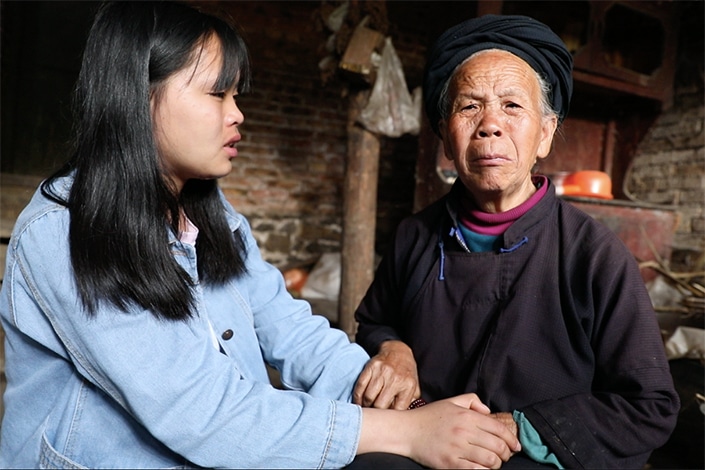
Confucian ideas about the importance of clearly defined familial roles and relationships live on in the complex set of terms used to describe family members in modern China.
Traditional gender roles
Chinese family trees traditionally followed a patrilineal structure in which bloodlines were carried on by male heirs. Children inherited membership to their father’s family and it was believed that only sons could continue their family’s lineage.
When a woman married in ancient China, she both literally and symbolically departed from her own family by moving into her husband’s household. This tradition is reflected in the gendered language that’s still used to describe the process of marriage in China today.
When talking about a woman getting married, the phrase 嫁出去 (jià chūqù) is used. This phrase can be literally translated as “to marry a daughter off/out.” Talking about marriage in this way clearly emphasizes the traditional idea that women leave their own families and become part of their husbands’ clans after their weddings.
Interestingly, when talking about a man getting married, a separate Chinese verb, 娶 (qǔ), is used. This character is made up of the verb 取 (qǔ; to take; get; fetch) and the character 女 (nǚ), implying the act of acquiring a woman through marriage.
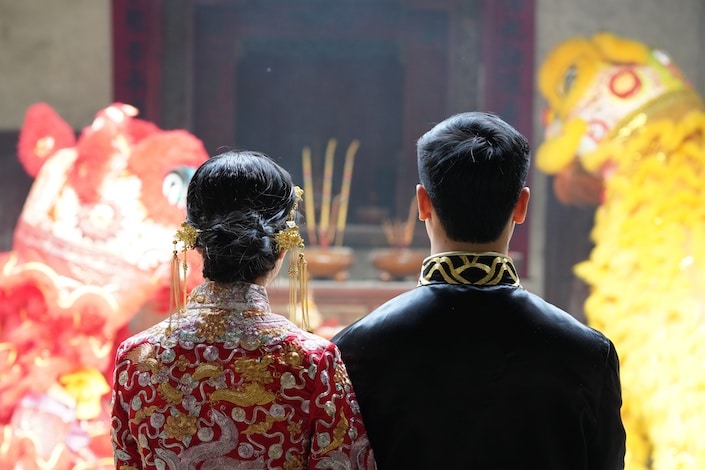
The idea that women become part of their husbands’ families upon marriage is embedded in the Chinese language.
Still responsible for honoring the ancestors of her own father’s bloodline, according to traditional gender roles, a wedded woman belonged to her husband's clan and was obligated to care for and serve her in-laws.
Since bloodlines could be continued and parents would be taken care of in their old age if they gave birth to male successors, having sons was considered a useful investment in ancient China.
The importance of male bloodlines in traditional Chinese families gradually gave rise to a common gendered phenomenon known in Chinese as 重男轻女 (zhòngnán-qīngnǚ), which refers to a historical preference for sons over daughters. Although this attitude is no longer the norm for many Chinese families, its effects can still be seen in China today.
The difference between family members who have married in from outside (i.e., those on the maternal side) and those who belong to the core, patrilineal family line (i.e., those on the paternal side) is highly evident in the Chinese vocabulary used to describe relatives and will be further discussed in the vocabulary section of this article.

Despite a lingering preference for sons in some families, traditional Chinese gender roles are changing rapidly, especially in big cities.
The modern Chinese family
While they don’t dictate social norms as strictly as they once did, many of the Confucian values that governed pre-modern China are still visible in contemporary Chinese family life.
The notion of 孝顺 (xiàoshun; filial piety), for example, is still considered extremely important, with many children expected to care for and live close to their parents throughout their adult lives in order to convey gratitude and respect. It’s also common for extended families to live together and maintain close relationships, even if their kinship bonds are distant.
Fueled by the principle of family harmony, marriage is also an essential rite of passage for most modern families, with many Chinese young people reportedly feeling pressured to marry before a certain age. However, this norm is slowly changing due to the rise of individualism, as well as growing opportunities for upward mobility and economic advancement.
Despite these recent changes, emphasis on family remains perhaps the most important of all Chinese cultural values.
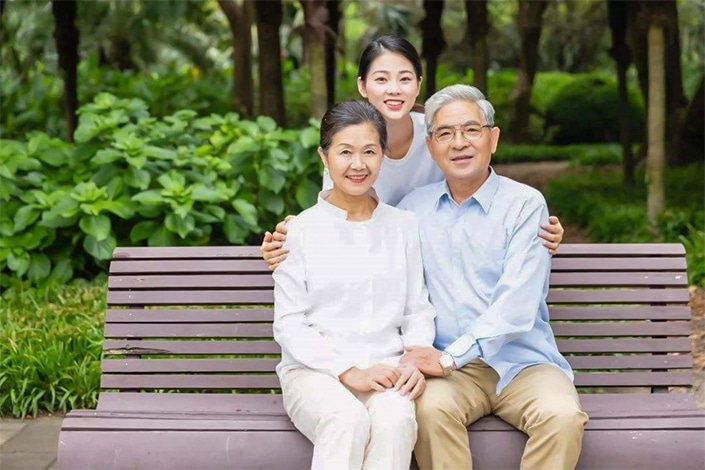
Filial piety remains an extremely important value in modern China.
How to talk about family members in Chinese
Because family relationships are believed to be essential bonds within Chinese society, it comes as no surprise that the terms of address for family members are both thoughtful and complex.
In English, we take generation, and often gender, into account when deciding what to call our family members. However, we don’t tend to have different words for maternal versus paternal relatives.
For example, whether you are discussing your mom’s older sister or your dad’s younger sister, it is always appropriate to address either parent’s female sibling as “aunt,” no matter the exact nature of your relationship. In Chinese, on the other hand, there are many different words for “aunt” which change depending on a variety of factors.
When discussing the members of one’s family tree in Chinese, it's important to clarify kinship and blood ties as clearly as possible. In addition to gender and generation, considerations like maternal versus paternal lineage, marriage versus blood relationships, and relative age should all be taken into account.
In China, addressing family members in the correct way is considered a sign of respect. Conversely, using an incorrect term of address can be seen as very disrespectful.

Students of the Chinese language should take special care to learn the correct forms of address for family members as these terms are extremely important in China.
Talking about immediate family in Chinese
Let’s begin by learning the terms of address for the basic family unit. Happily, these are relatively straightforward in Mandarin.
Vocabulary for immediate family
| 汉字 | Pīnyīn | English |
|---|---|---|
| 母亲 | mǔqin | mother (formal) |
| 妈妈 | māma | mom (informal) |
| 父亲 | fùqin | father (formal) |
| 爸爸 | bàba | dad (informal) |
| 妻子 | qīzi | wife (formal) |
| 老婆 | lǎopo | wife (informal) |
| 丈夫 | zhàngfu | husband (formal) |
| 老公 | lǎogōng | husband (informal) |
| 哥哥 | gēge | older brother |
| 姐姐 | jiějie | older sister |
| 弟弟 | dìdi | younger brother |
| 妹妹 | mèimei | younger sister |
| 儿子 | érzi | son |
| 女儿 | nǚ'ér | daughter |
Talking about extended family in Chinese
When it comes to extended family members, often referred to as 亲戚 (qīnqi; relatives) in Chinese, things start to get a bit more complex. We’ve classified the vocabulary words for referring to extended family members according to generation.
First, let’s review family elders, that is, grandparents and those of the grandparenting generation, like mother-in-laws and father-in-laws.
Vocabulary for grandparents and older relatives
| 汉字 | Pīnyīn | English |
|---|---|---|
| 奶奶 | nǎinai | paternal grandmother |
| 爷爷 | yéye | paternal grandfather |
| 外婆 | wàipó | maternal grandmother |
| 外公 | wàigōng | maternal grandfather |
| 公公 | gōnggong | husband's father (father-in-law) |
| 岳父 | yuèfù | wife's father (father-in-law) |
| 婆婆 | pópo | husband's mother (mother-in-law) |
| 岳母 | yuèmǔ | wife's mother (mother-in-law) |
As discussed earlier in this article, women in traditional China were seen as departing their own family and joining their husband’s family through the process of marriage, an attitude reflected in the phrase 嫁出去 (jià chūqù; to marry out).
This cultural concept can be seen in the terms of address used for grandparents such as 外婆 (wàipó; maternal grandmother) and 外公 (wàigōng; maternal grandfather). In these Chinese words, the character 外 (wài), meaning “outside,” is used to refer to maternal grandparents.
This use of 外 (wài) highlights the idea that maternal relatives only belong to the family through marriage instead of belonging to the internal, patrilineal family. This is an example of how traditional Chinese family values and ideas about gender relations are reflected in the language itself.
Next, on to the aunts and uncles, where terms of address can be notoriously confusing:
Vocabulary for aunts and uncles
| 汉字 | Pīnyīn | English |
|---|---|---|
| 伯伯 | bóbo | dad's older brother |
| 叔叔 | shūshu | dad's younger brother |
| 姑夫 | gūfu | dad's older sister's husband |
| 姑夫 | gūfu | dad's younger sister's husband |
| 舅舅 | jiùjiu | mom's older or younger brother |
| 姑妈 | gūmā | dad's older sister |
| 姑姑 | gūgu | dad's younger sister |
| 伯母 | bómǔ | dad's older brother's wife |
| 婶婶 | shěnshen | dad's younger brother's wife |
| 姨妈 | yímā | mom's older sister |
| 阿姨 | āyí | mom's younger sister |
| 舅母 | jiùmu | mom's brother's wife |
| 姐夫 | jiěfu | older sister's husband |
| 妹夫 | mèifu | younger sister's husband |
| 嫂子 | sǎozi | older brother's wife |
| 弟妹 / 弟妇 | dìmèi / dìfù | younger brother's wife |
Note that although China’s one-child policy, which was effective from 1979-2016, means that many families today don’t have multiple children or siblings, it’s still possible that you’ll encounter a family with a few brothers and sisters.
In order to differentiate between multiple aunts and uncles of the same status, Chinese speakers often add 大 (dà),二 (èr),三 (sān), and so forth in front of the term of address. For example, 二姨 (èr yí), would refer to the second oldest sister in mom’s family.
Let’s learn how to address cousins in Chinese next:
Vocabulary for cousins
| 汉字 | Pīnyīn | English |
|---|---|---|
| 堂兄 | tángxiōng | older male cousin on dad's side |
| 堂弟 | tángdì | younger male cousin on dad's side |
| 堂姐 | tángjiě | older female cousin on dad's side |
| 堂妹 | tángmèi | younger female cousin on dad's side |
| 表哥 | biǎogē | older male cousin on mom's side; sometimes also older male child of dad's sister |
| 表弟 | biǎodì | younger male cousin on mom's side; sometimes also younger male child of dad's sister |
| 表姐 | biǎojiě | older female cousin on mom's side; sometimes also older female child of dad's sister |
| 表妹 | biǎomèi | younger female cousin on mom's side; sometimes also younger female child of dad's sister |
In the vocabulary list above, you’ll find that 堂 (táng) is used for cousins on the paternal side, while 表 (biǎo) refers to cousins on the maternal side. Note that, depending on the specific family and region, 表 (biǎo) is sometimes used to refer to the children of women on the paternal side, instead of 堂 (táng). This serves as another example of how traditional Chinese principles, which historically differentiated matrilineal and patrilineal bloodlines, are reflected in the modern vernacular.
In spite of the detailed variations in the terms of address used for cousins, you should be aware that it is common to hear Chinese people, particularly children or young adults, refer to their cousins as their brothers or sisters by using the terms 哥哥 (gēge),弟弟 (dìdi),妹妹 (mèimei) or 姐姐 (jiějie), based on their relative age and gender.
This practice is likely another effect of the one-child policy, which has led to cousin relationships replacing sibling bonds for only children. It is perhaps also a demonstration of China’s emphasis on familial unity, a vestige of the past in which extended families customary lived together as a single household.
In Chinese, nieces and nephews are also referred to according to gender, as well as their position on the paternal versus the maternal side of the Chinese family tree:
Vocabulary for nieces and nephews
| 汉字 | Pīnyīn | English |
|---|---|---|
| 侄女 | zhínǚ | brother's daughter |
| 外甥女 | wàishengnǚ | sister's daughter |
| 侄子 | zhízi | brother's son |
| 外甥 | wàisheng | sister's son |
Note the use of the character 外 (wài; outside) to denote nieces and nephews who belong to one’s sister’s family.
Feeling overwhelmed by all the ways to address family members in Mandarin? Check out this video for a clear and comprehensive explanation of the complete Chinese family tree:
Note on Chinese dialects
In addition to Mandarin Chinese, or Putonghua, China is also home to diverse regional dialects that are spoken across the country. Depending on where you study, you may encounter additional terms for addressing family members besides the ones mentioned above.
Although this can be perplexing for some students, remember that the more regional terms you know, the more authentic your Chinese will sound.
Nonetheless, because most people in China understand Mandarin regardless of whether or not they also speak a local dialect, you’ll be well-prepared to talk about family members with any native Chinese speaker by utilizing the vocabulary words above.
Grammar for talking about family members
Now that you’ve learned the names for Chinese family members, be sure you understand how to use them by reviewing these useful Chinese grammar structures for introducing and discussing your family members in Chinese.
The first basic sentence pattern that almost all beginning students of the Chinese language learn early on in their studies is as follows:
我 (wǒ; I, me) + 有 (yǒu; have) + (number of) + 个 (gè; common measure word) + (type of family member).
This sentence pattern, which is the equivalent of “I have + number + type of family member” in English, is used to introduce how many and what kind of family members you have. For example:
我有两个妹妹。
Wǒ yǒu liǎng gè mèimei.
I have two younger sisters.
我有一个哥哥和一个弟弟。
Wǒ yǒu yī gè gēgē hé yī gè dìdi.
I have one older brother and one younger brother.
Another common sentence pattern related to family members is:
他/她 (tā; he/she) + 是 (shì; is) + 我的 (wǒ de; my) + (family member term of address).
This sentence translates to “He/she is my + type of family member” and is a useful way to introduce a relative when doing activities such as looking at photographs or discussing your family tree. For example:
他是我的侄子。
Tā shì wǒ de zhízi.
He’s my brother’s son (or nephew)
她是我的伯母。
Tā shì wǒ de bómǔ.
She’s my dad’s older brother’s wife (or aunt).
While they may appear tricky at first, these Chinese family tree words will quickly become a staple of your vocabulary once you start practicing. The best way to learn them well is to build up your conversational experience and cultural understanding by chatting with native speakers or spending time in China.
Remember that as a language student, knowing the correct way to refer to your distant relatives, new in-laws, and/or Chinese friends’ family members demonstrates your respect for Chinese culture, exceptionalness as a learner, and commitment to achieving an authentic understanding of the world around you. 加油!
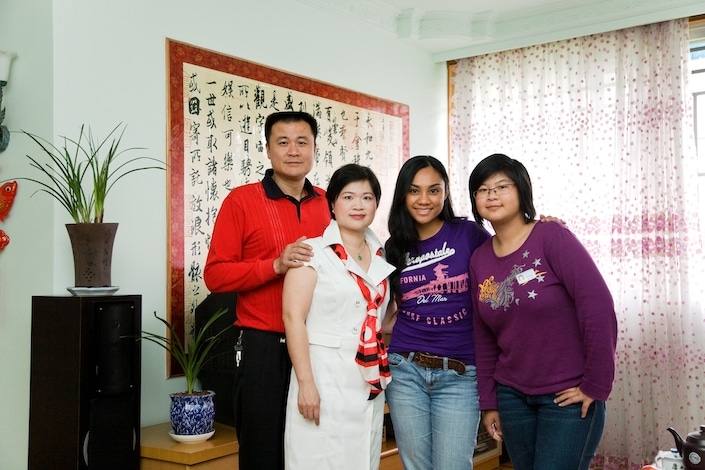
Living with a homestay family in China is one the best ways to gain familiarity with Chinese family-related vocabulary.
Chinese family vocabulary
| 汉字 | Pīnyīn | English |
|---|---|---|
| 家谱 | jiāpǔ | family tree; geneolagy |
| 社会 | shèhuì | society |
| 伦理 | lúnlǐ | ethics |
| 孔子 | Kǒngzǐ | Confucius |
| 儒家思想 | Rújiāsīxiǎng | Confucianism |
| 家庭 | jiātíng | family tree; household |
| 和睦 | hémù | harmonious |
| 祖先 | zǔxiān | ancestors |
| 长辈 | zhǎngbèi | elders |
| 孝顺 | xiàoshun | family obedience; filial piety |
| 辈分 | bèifen | position in the family hierarchy |
| 父系 | fùxì | patrilineal |
| 尊敬 | zūnjìng | to respect; to revere |
| 重男轻女 | zhòngnán-qīngnǚ | preference for sons over daughters |
| 血统 | xuètǒng | blood relationship |
| 姻亲 | yīnqīn | in-laws |
| 家庭主义 | jiātíngzhǔyì | family-centrism |
| 个人主义 | gèrénzhǔyì | individualism |
| 直系亲属 | zhíxì qīnshǔ | next of kin |
| 亲戚 | qīnqi | a relative |
| 嫁 / 嫁 出去 | jià / jià chūqù | to marry (of a woman; lit. to marry out) |
| 娶 | qǔ | to marry (of a man; lit. to take a wife) |




